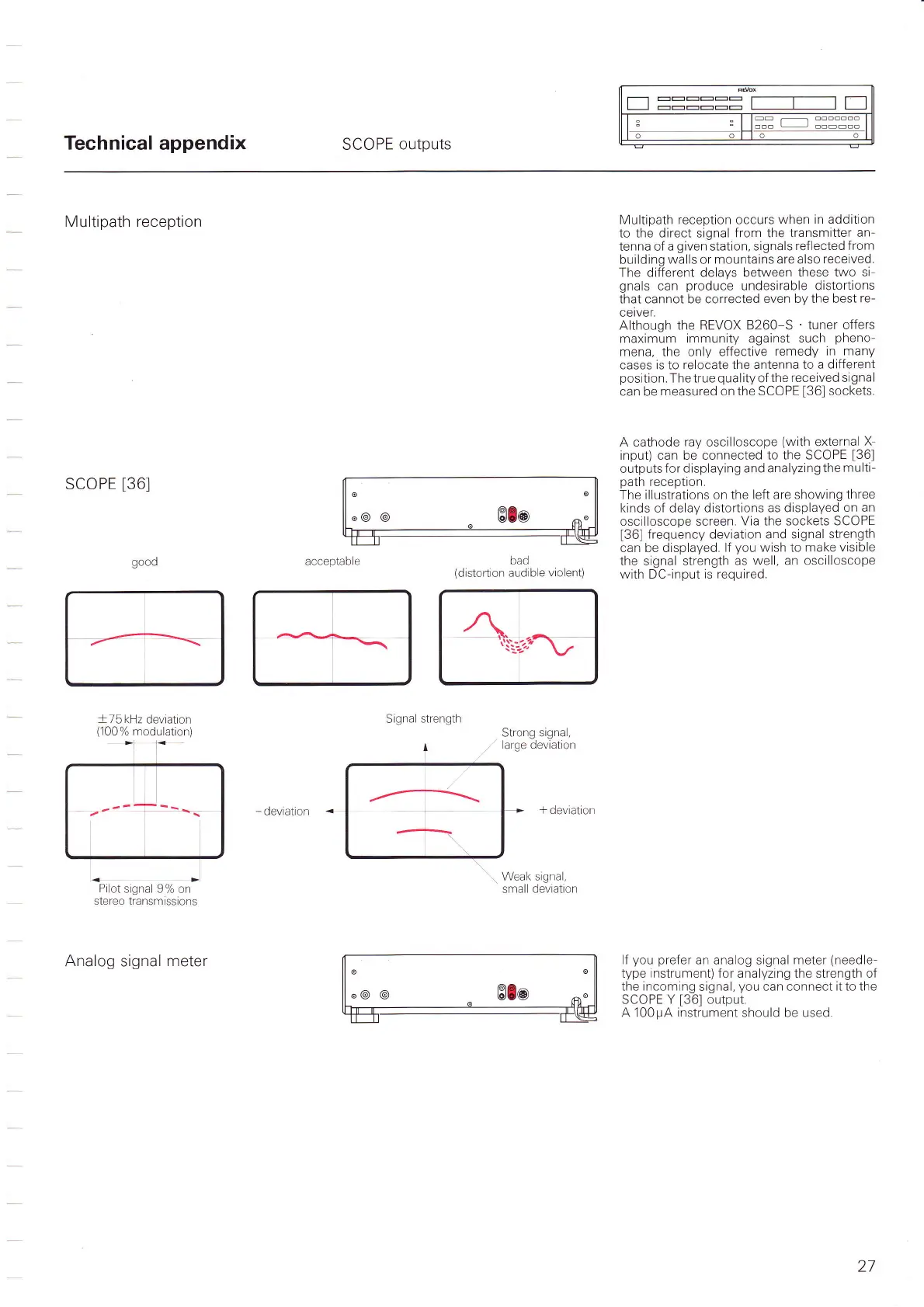
Do you have a question about the Revox B260 and is the answer not in the manual?
Contains the basic information for operating the tuner.
Covers line voltage, connections, and power on procedures.
Explains all main functions of the tuner.
How to access stored station frequencies and data.
Method to retrieve stations based on program type.
Accessing auxiliary functions and selecting stations manually.
Adjusting RF, IF, and other settings for optimal reception.
How to assign custom names to station memories.
Setting audio output and station memory levels.
Common issues and solutions for tuner operation.
Operation of the unit via infrared remote control.
Using oscilloscopes and meters for signal analysis.
Physical size specifications of the tuner.
Information on Radio Data System features and types.
Detailed electrical and performance specifications.
Overview of all keypad functions and their pages.
Details on connecting antennas and audio equipment.
Ports for external control and main power connection.